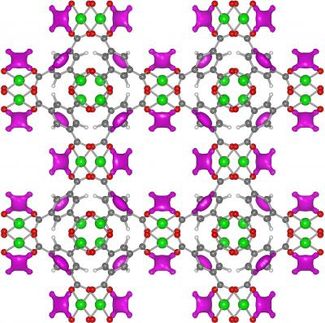Study: Self-Reinforced Plastics - Technically Excellent, but Commercially Viable?
Unique Properties will be the Key to Success for Self-Reinforced Plastics
Advertisement
Despite being in the early stages of development, self-reinforced plastics (SRPs) are already making waves in the plastics industry. With an outstanding combination of physical properties, SRPs are on the right track to reach a wide range of applications, particularly in the automotive sector.
SRPs combine the versatility and easy recyclability of a thermoplastic with the high performance of a fibre-reinforced composite. Their low weight, high stiffness and impact resistance are proving suitable for a wide range of semi-structural and structural automotive applications.
SRPs are being actively sought after for making lighter and smaller cars that save on fuel. According to the European Alliance for Thermoplastic Composites (EATC), the weight of mid-size cars is likely to fall from 1,400 kg to 1,150 kg by 2010, providing further impetus to the SRP market.
"In order to meet the new design requirements, automotive manufacturers are in search for low density plastics with good mechanical properties," says Frost & Sullivan Industry Analyst Dr. Brian Balmer. "They are now evaluating SRP products, particularly, polypropylene for non-structural components in upcoming models."
The automotive industry is a huge and growing market for plastic and composite materials, and gives SRP suppliers the best opportunity to gain critical volumes of business at an early stage.
However, gaining a stronghold in the automotive market will not be easy, especially in high volume automotive markets, where standards are extremely stringent and price pressure high.
The automotive market also exposes SRP products to intense competition particularly from glass mat thermoplastics (GMT) and long glass-fibre reinforced thermoplastics (LFT) across a range of thermoformed automotive applications.
While SRPs are a clear favourite over GMT and LFT in terms of mechanical properties, high prices of SRPs are a significant deterrent to immediate uptake. SRP suppliers need to reduce their cost structure to levels that permit more competitive pricing. A price range of between EUR 4 and EUR 6 per kg is considered more realistic by end users.
"At the same time, manufacturers need to be cautious regarding price reductions," warns Dr. Balmer. "It must be a gradual process that permits them to absorb losses as a result of lower pricing levels, especially during the early stages of market development."
SRP manufacturers need to make a strong impact as early as possible in key segments of the automotive market where the potential volume of business is likely to be highest.
For optimum revenue generation, SRP suppliers should target semi-structural and structural parts in low to medium volume cars. These include crossbeams where the SRP products adequately meet head impact requirements or A-pillars that perform well with an SRP shell.
Roof liners made from SRP products with a fabric covering and a number of under-body parts are other potentially lucrative application areas.
For manufacturers that consider automotive applications a far too costly and a demanding sector to penetrate, it may be advisable to identify more profitable niche markets where SRP product benefits hold more value, and therefore automatically command a premium price.
"Understanding that there is a market for SRP products beyond automotive applications is vital," says Dr. Balmer. "In the future, SRP manufacturers can look towards orthopaedic braces and ballistics protection equipment that offer tremendous scope for growth."
There is also significant potential to apply self-reinforced plastics to other areas such as sports and personal protective equipment, machine casings and housings, transport containers and industrial cladding, especially where a combination of weight saving and toughness is an important requirement.





























































